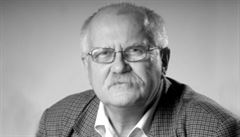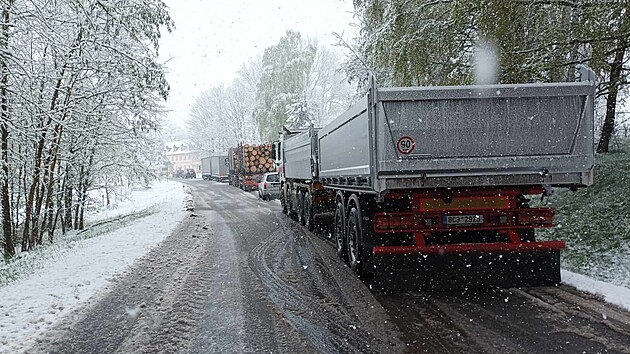I would like to state right at the outset that I know biomass is not lean cutlets from pigs bred in conditions not particularly afflicted by chemistry. Yet when I look into the Academic Dictionary of Foreign Words, under the entry “biomass” I find this definition: “Organic matter of individual plants or vegetation in a certain moment of time in a certain area.” Again nothing that could arouse any passions in society, let alone in its energy sector. And yet this is the case. Why is that?
Well, because that glorious selfsame Academic Dictionary does not say anything about the hope that biomass utiliaztion evokes. Nor about the apprehensions it gives rise to. It is a broad spectrum of opinions, encompassing something between a colorful mountain meadow and a dry forest on fire. People somewhat tend to forget that in the long historical periods preceding the advent of coal mining biomass (i.e., wood and peat) was virtually the one and only source of utilizable thermal energy. Is this then some kind of comeback? Well, yes and no.
A noose prepared for Europe
A certain degree of fogeyism, pining for the sound of logs crackling in the fireplace, does not yet mean a return to massive timber consumption. Similarly, biomass, either in the “dictionary” form or the more general form of energy biotechnologies, will never in the future attain such absolute dominance as it used to have in the past millennia prior to the Industrial Revolution.
What is it then that now makes the world’s most-advanced countries invest large amounts of money in research into new technologies (including other types of “non-traditional energy generation”)? In our good old Europe, it is the growing awareness that the actual reserves of energy sources have been rapidly diminishing, without their consumption being significantly reduced.
That which is saved by means of energy-efficient technologies is swallowed up by new economic growth. Europe is thereby becoming more dependent on imports of primary fuels and energies, and not only from the regions that can be considered risk-free. The Continent would thus gradually be putting its head into the noose of the political and power ambitions of non-European states; non-European not only geographically but, primarily, culturally and politically too. It is precisely the awareness of such future risk that leads the European Union to define solutions that will either reverse or at least weaken the process.
The doughty Czech patriot suspects Brussels
Many Czechs surmise that biomass and other non-traditional energy sources are the result of the pressure on the part of the environmentally minded part of political representations, bewitched by a sort of European “green madness,” arguing about the color of our planet.
According to Czech wiseacres, all this foolishness is dominated by Brussels, which many doughty patriots enjoy the benefits of, just as their predecessors a century ago enjoyed those of Vienna. Their opinion has been supported by, to put it mildly, fouled up projects: green petrol (rape grown as far as the eye can see), the proliferation of solar power plants with the subsequent attack on our wallets, and so on.
It is said that a pessimist is just a better-informed optimist. There’s something in that. The true blue Czech suffers from the conviction that we do not need anything similar to various quaint and suspicious technologies. We have coal, and still a little bit of uranium — at least that which the Russians didn’t manage to steal. Don’t give us such nonsense as biomass!
Yet they somehow tend to forget that Germany once had enormous coal reserves in the Rhineland and Westphalia, France and Belgium in Lorraine, Great Britain virtually everywhere possible — and where is the coal today? The mines have been gradually worked out and shut down. If someone needs coal, it is imported, primarily from Australia, but also, for instance, from the Czech Republic …
But our reserves aren’t bottomless either; many estimates claim that in just a few decades the last coal wagon will be leaving North Bohemia. And should our government muster up the courage, it will stop behaving like a dung-beetle and decide to write off the reserves above which the inhabitants of Jiřetín and Černice continue to tremble with fear. Then we will face a rather crucial problem: how to remake our energy sector, without sinking into the morass of excessive dependence on imports or decreasing the reliability of energy supplies to consumers.
For the time being, the proposed state energy conception drafts really do not offer such solutions, steadily drawing upon the traditional “coal in first place” schemes. It has already become Czech folklore: Someone writes something, the government approves it and life quietly pursues its own path. Should we consider such documents a test of the success of various energy lobbies, it would be funny but, at the same time, also illuminative. The comedy finishes, however, at the moment when it becomes a tragedy. I don’t want to be a false prophet, yet I am afraid that the moment of truth is relentlessly approaching.
Everyone in Europe knows…
Without claiming to have the patent for a happy denouement, I deem it necessary that the conception of Czech power engineering essentially change, including within the European context. Perceiving the percentage share of non-traditional and renewable sources in the total energy balance, the defined intentions and objectives set in the common European energy policy as a sort of foolish Brussels diktat, from which we will, as usual, opt out, represents the maximum degree of immaturity and irresponsibility. Everyone in Europe knows that large power plants’ days are numbered; everyone expect the Czechs.
Everyone in Europe knows that large power plants’ days are numbered and that their place is being taken over by flexible local units that make use of combined heat and power (CHP) generation. Everyone knows that such a system is much safer, more reliable in operating terms, that it is a system that reduces the losses incurred during electricity transmission over long distances, a system with more flexible supply, one ensuring the so much needed regulatory output. Everyone knows it – except the Czechs.
And here’s where we return to biomass. These local power stations need not necessarily combust just natural gas, even though its share will certainly increase. An opportunity is afforded for efficient firing of biomass acquired in proximity to the power station, an opportunity for a significantly greater application of biogas obtained from biomass.
The combination of natural gas and biomass is basically the only way that will make it possible for combined heat and power generation to survive, once coal extraction has become a thing of the past. In cooperation with nuclear sources and non-traditional electric power generation methods (including the much maligned photovoltaics), it can result in an essential change in the structure of the Czech energy sector.
How many years are left? Ten? Fifteen?
All the papers and studies, however, generally overlook the time factor. Transformation of the energy sector from the current state into the target model form is a systemic matter. The external inputs have been slowly but irreversibly changing (the gradual reduction of coal mining, the age of power plant and CHP capacities), yet no credible trajectory of the substitution has been defined, the milestones of this transition have not been determined and, in more general terms, there is no valid conception of the target structure. It cannot be considered the setting of a mere percentage share of individual energy technologies in the country’s total projected consumption.
Therefore, it should be stated in black and white what technologies are structurally concealed under the “non-traditional and renewable sources” item, how the energy sector’s transformation will be ensured at the time when coal excavation will continuously and unstoppably decrease, in what manner, and on the basis of what type of fuel, electric power plants and heating stations, whose service life is already on the wane today, will be replaced. All this — just like every transition process — must be defined in the form of proposals of procedural steps and, above all, their timing. If such steps are not made, we can keep smugly telling ourselves what wiseacres we are for another ten or fifteen years — yet no longer.
We prefer to dispute whether any biomass is necessary at all, instead of precisely — and from the level of public administration as the body responsible for the energy policy — exploring and defining feasible possibilities we have in this area in the future. Among other things, we would thereby preclude such excesses as the uncontrolled boom of solar power plants has become.
I think that the public administration should at last say more precisely what it wants to do to ensure the future provision of fuel supplies instead of merely interpreting the opinions of fuel producers.





